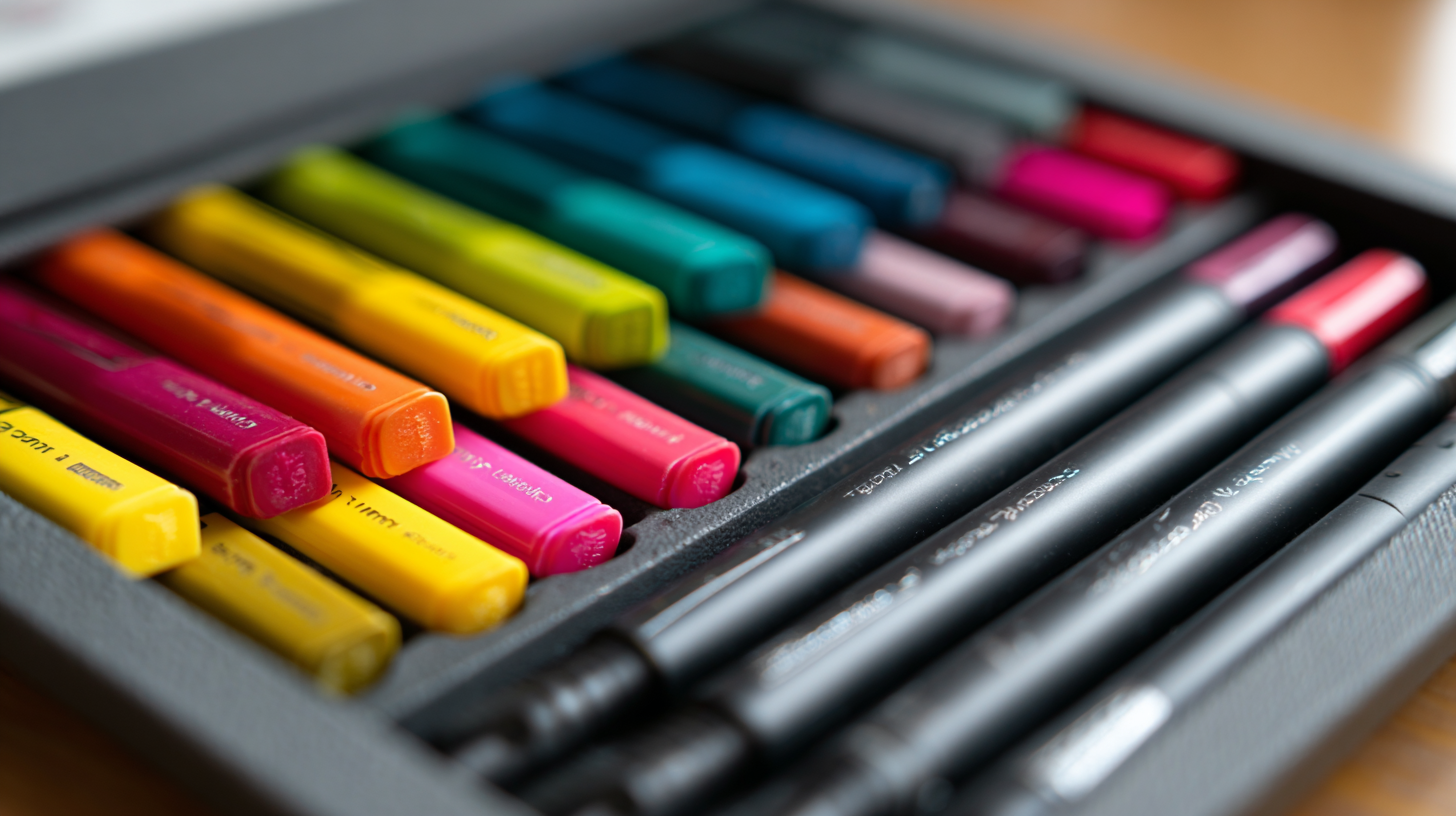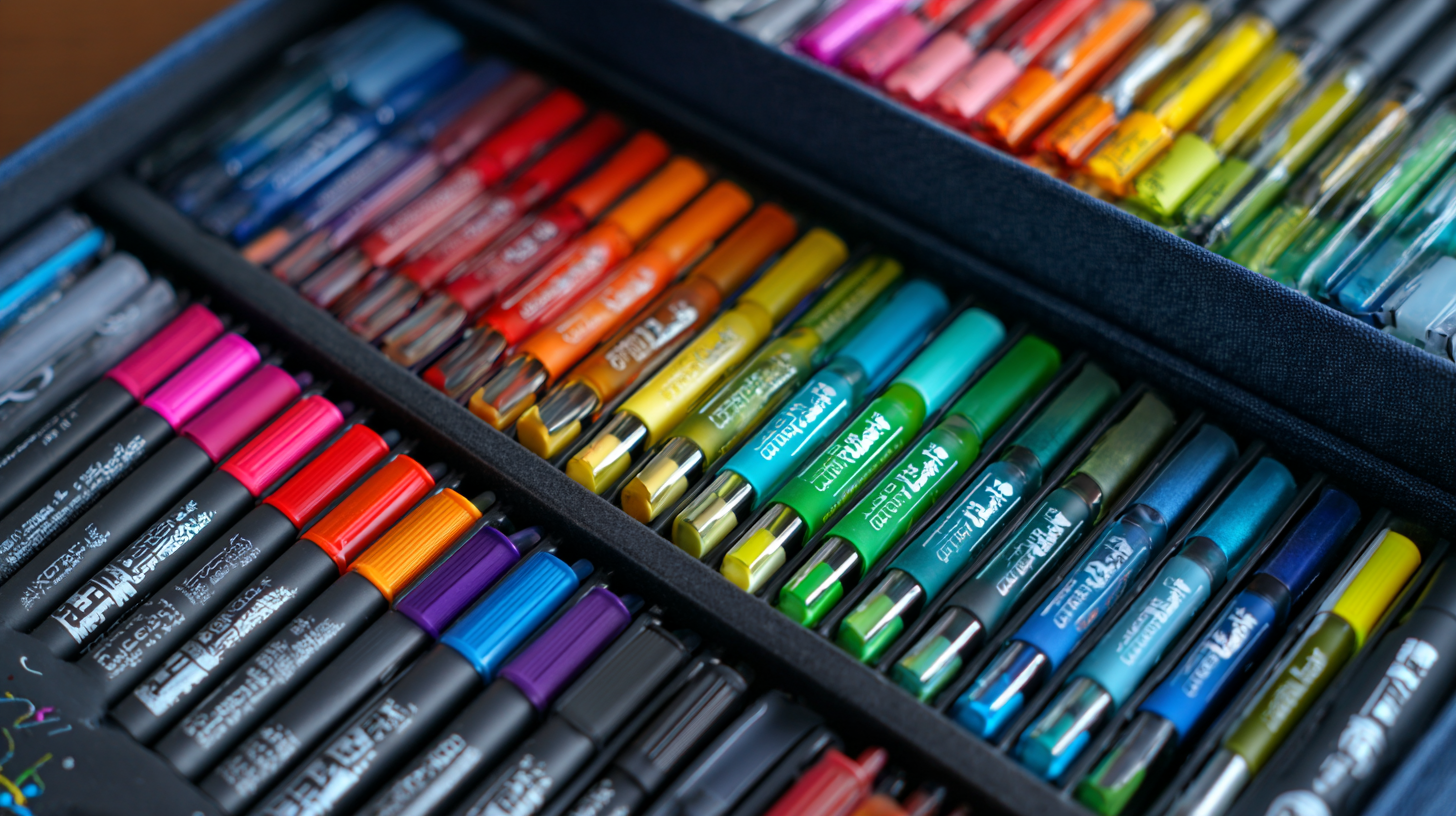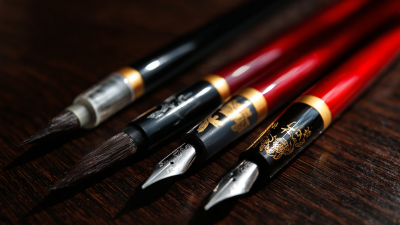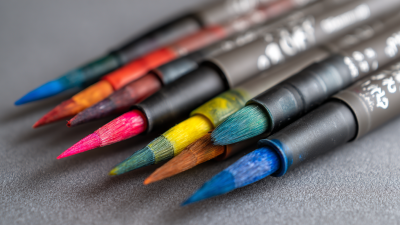Choosing the right brush markers can make a significant difference in how your artwork turns out. As you embark on the journey to color your creations, understanding what makes a great brush marker is essential. Jennifer Tay, a renowned expert in the field of art supplies, once said, "The quality of your tools can either elevate your artwork or hinder your creativity." This statement rings particularly true when discussing the Best Brush Markers For Coloring, which can help bring your artistic visions to life.

In a market flooded with options, selecting the ideal brush markers can be overwhelming. Factors such as color payoff, blending capability, and durability are just a few elements that can influence your choice. Whether you are a beginner looking to experiment or a seasoned artist in search of professional-grade tools, the importance of finding the Best Brush Markers For Coloring cannot be overstated.
With insights from industry experts and recommendations based on extensive testing, this guide will navigate you through the features to look for and the brands that stand out in the world of brush markers. By the end, you'll be well-equipped to make an informed decision that not only enhances your coloring experience but also enriches your artwork.
Brush markers have gained popularity among artists for their versatility and ease of use in creating detailed works and vibrant illustrations. Understanding the different types and features of brush markers is crucial in selecting the best tools for coloring your artwork. Generally, brush markers come in two categories: alcohol-based and water-based. Alcohol-based markers are renowned for their blendability and vivid colors, making them ideal for vibrant artwork, while water-based markers are easier to clean and often come in more pastel shades, suitable for soft coloring techniques.
When choosing brush markers, consider the tip size and firmness. Fine tips allow for precise details, while flexible tips can create varied strokes, emulating the feel of traditional painting. Additionally, look for features such as refillable ink or brush tip durability, which can enhance your long-term experience. According to recent reports, approximately 75% of artists consider the quality of the marker's ink and its blending capabilities as primary factors in their purchasing decisions.
Tips: When starting, experiment with different types of markers to find what feels right for your style. Practice fundamental techniques like blending and layering to maximize your brush markers' potential. Remember that the right tools can significantly elevate your artwork, so take the time to explore and choose wisely.
| Type | Color Quality | Tip Shape | Ink Type | Blendability | Price Range |
|---|---|---|---|---|---|
| Water-based | Vibrant & Transparent | Flexible Brush Tip | Water-soluble | Excellent | $10 - $30 |
| Alcohol-based | Highly Pigmented | Chisel & Brush Tip | Alcohol-based | Good | $30 - $50 |
| Hybrid | Rich Color | Dual Tip | Combination | Moderate | $15 - $40 |
| Acrylic-based | Opaque & Matte | Round Tip | Acrylic Paint | Limited | $5 - $20 |
When selecting brush markers for coloring your artwork, several key factors should guide your decision-making process. First and foremost, consider the ink type. Alcohol-based markers tend to blend better and offer vibrant colors, making them a favorite among professionals. According to a 2022 report from the Creative Arts Association, about 68% of artists prefer alcohol-based markers for their versatility and smooth application. Conversely, water-based markers are great for layering and offer easier cleanup, making them suitable for beginners.
Another crucial factor is the brush tip size. Brush markers typically come with fine, medium, and broad tips, allowing for different styles and techniques. A 2023 study published in the Journal of Art Education highlighted that markers with dual tips (brush and fine tip) are increasingly popular, as they provide greater flexibility for detailed work and bold strokes. Additionally, evaluating the color range is essential. A broader palette can enhance creativity and provide more options for shading and blending, which is crucial for achieving depth in your artwork. Ultimately, understanding these factors can significantly improve your coloring experience and the quality of your finished piece.
When selecting brush markers for your artwork, it's essential to compare popular brands based on quality and price. Leading brands like Copic, Tombow, and Prismacolor each offer unique advantages. Copic markers, known for their blendability and range of colors, cater to professional artists but come with a higher price tag. On the other hand, Tombow markers provide a dual brush tip option, making them versatile for both coloring and calligraphy while being more budget-friendly. Prismacolor markers deliver rich pigment at a mid-range price, ideal for those seeking quality without a hefty investment.

Tips: When testing brush markers, make swatches to see how the colors layer and blend together on your paper. Additionally, consider the nib size and type: a fine tip is great for detail work, while a broader brush tip is better for filling in larger areas.
Another important factor is the ink quality. Alcohol-based inks, like those in Copics, offer vibrant colors and quick drying times, making them perfect for illustrations. Meanwhile, water-based inks found in Tombow markers are easier to work with for blending but may not be as permanent. Always evaluate your specific needs when choosing the best brush markers for your projects.
When using brush markers for coloring your artwork, mastering various techniques can elevate your creativity and precision. One effective technique is the blending of colors. To achieve smooth transitions, start by applying a lighter color as a base layer. Then, while the ink is still wet, introduce a darker shade and gently blend the two using a light touch. This method creates a gradient effect that adds depth and dimension to your artwork.
**Tips:** Always practice on a separate sheet before applying techniques to your main artwork. Different paper types can influence the blending process, so experimenting will help you find the best match for your style.
Another essential technique is layering, which involves applying multiple colors in succession to build richness in your artwork. Begin with lighter colors and gradually add darker ones, allowing each layer to dry before proceeding. This technique not only enhances the vibrancy of your work but also prevents muddiness, ensuring that each color stands out.
**Tips:** Use a colorless blender marker to soften edges between layers, providing a seamless look. Keeping your markers at an angle can also help create varying line thicknesses, adding interest to your piece.
When it comes to prolonging the life and effectiveness of brush markers, proper care and maintenance are essential. According to a report by the Art Materials Industry Association, well-maintained markers can last up to three times longer than those that are neglected. This is vital for artists who rely on vibrancy and precision in their work. To ensure the longevity of your brush markers, always store them horizontally and away from direct sunlight to prevent ink drying and fading.
Additionally, regular cleaning helps maintain the integrity of the brush tip. A study from The Society for Art and Craft indicates that users who clean their markers after each session experience a significantly lower rate of fading and clogging. To clean, gently wipe the brush tip with a damp cloth or use specific cleaning solutions designed for art supplies. This habit not only enhances the performance of the markers but also ensures that colors remain vivid and true over time, allowing artists to achieve their desired outcomes in every project.







